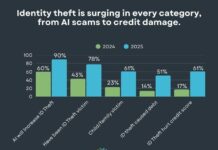NEW YORK, Feb. 14, 2018 /PRNewswire/ — A group of creditors (the “Creditors” or “we“), which collectively holds a substantial portion of Puerto Rico’s outstanding debt, released the below statement today in response to the most recent version of the Commonwealth’s Fiscal and Economic Growth Plan (the “Plan” or “FEGP“):
Although Puerto Rico’s creditors have differing perspectives on a number of issues related to the ongoing restructuring, we share a unified view that a pragmatic, transparent and growth-focused policy agenda is critical to the island’s recovery. This view has only strengthened since the devastation caused by Hurricanes Irma and Maria exacerbated the already difficult economic situation on the island. Unfortunately, we believe the Commonwealth’s recently proposed FEGP represents a major step backward on the road to recovery. The Plan fails to provide a credible basis on which to restructure the island’s debt, while completely lacking a foundation for revitalizing the local economy and restoring access to the capital markets.
Perhaps the most troubling issue with the FEGP is that it was developed in an opaque manner, essentially relying on outputs from underlying analyses that have never been made public. This flies in the face of the Commonwealth’s commitment to transparency and undermines recent guidance from House Natural Resources Committee Chairman Rob Bishop, who stated “[i]t is imperative the Oversight Board and Governor fully integrate those who hold the debt into the development of these [fiscal] plans, thereby guaranteeing accuracy and transparency in the underlying assumptions.”
As long-time lenders to the Commonwealth and its instrumentalities, we are committed to supporting the economic, commercial and social revitalization of Puerto Rico. Now is the time to lay the foundation for how private capital will augment federal aid and local revenues on the road to recovery. We believe an objective and thorough analysis of the Plan reveals a number of fundamental flaws that need to be addressed before moving forward, including:
Detailed, Substantive Growth Agenda is Needed
To date, the Commonwealth’s focus on litigation has distracted stakeholders from the fact that it has no vision for igniting growth. A number of government officials have grown alarmingly comfortable assuming continued population decline and economic stagnation. In addition, policymakers have not yet put forth a detailed plan to encourage citizens and businesses to remain on the island.
The government must create and drive a growth agenda that supports a vibrant economy, stems outmigration and incentivizes recent departees to return to the island as part of its revitalization. Towards this end, the Commonwealth should begin working with providers of private capital and industry experts to develop a broad, comprehensive economic development program.
Commonwealth Must Exhibit Fiscal Discipline
Reductions in government expenses under the Plan are minimal, with government payroll figures growing by 1.2% annually, even as population is projected to decline by 20% during the Fiscal Plan period. This disconnect stands in stark contrast to the reductions in government expenditures achieved in practically every other municipal restructuring. While Puerto Rico’s government expenses – on a per capita basis – are projected to increase by 2%1 annually throughout the FEGP’s time horizon, the likes of Detroit, Stockton and San Bernardino exhibited annual declines of 5.2%, 3.0% and 3.7%, respectively, in the four-year periods following their restructurings.
Show Real Accountability and Transparency
We ask that the Commonwealth finally make public the underlying analyses shared with the Federal Oversight and Management Board (FOMB) to evaluate the FEGP. Right now, the Plan is unacceptably opaque on a number of levels, including:
- Neglecting to distinguish between essential services and expenses the government would simply like to pay;
- Failing to fully account for cash held at various accounts that may be available to meet needs outlined in the Plan;
- Not sharing 2015 audited financials;
- Relying on an outdated migration forecast; and
- Using healthcare cost and plan participation assumptions that contradict the government’s own outmigration forecast.
Unfortunately, our concerns have been validated by the federal government’s own refusal to provide taxpayer-backed Community Disaster Loan funding without improved transparency and accountability from the Commonwealth.
Credible Debt Sustainability Analysis is Essential
The Plan’s debt sustainability analysis is built on sparse data and outright mischaracterizations, including a comparison of Puerto Rico to U.S. states. This overlooks the fact that citizens of Puerto Rico do not pay federal income taxes. The Commonwealth has acknowledged this reality when trying to access the capital markets in the past, stating that the “GDB believes that any comparison of the public debt levels of Puerto Rico with the states should include state, local and federal debt.”2
Rather than comparing Puerto Rico’s debt levels to those of a state, we believe the Commonwealth’s municipal finance advisers should construct an overlapping debt analysis that is consistent with accepted public finance practices. Any objective assessment will evaluate the amounts of debt existing at all levels of government stateside relative to Puerto Rico. Only through this type of analysis can Puerto Rico’s burden and, therefore, debt sustainability be effectively measured.
We also suggest benchmarking Puerto Rico’s debt sustainability against sovereign debt metrics. Although the World Bank and International Monetary Fund have found that 18%-22% of revenues is a sustainable level of debt service for low-income countries3, the proposed FEGP projects debt service as a percentage of revenues at only ~8%. The Plan also reflects a debt versus Gross National Product ratio of ~20% and debt vs. Gross Domestic Product ratio of 13%, while the conservative New York Federal Reserve reports on Puerto Rico’s economy* have suggested 60% as a reasonable target level.4
A coherent analysis is needed to regain the confidence of creditors, citizens, and current and future enterprises contemplating economically-beneficial investments in Puerto Rico.
Reduce Excessive Title III Expenses
While creditors are told there is extremely limited money for debt service, and pensioners take cuts, the FEGP provides that hundreds of millions in excessive litigation expenses will be paid in full and in cash. Earmarking exorbitant fees for legal and financial advisors, whose interests are not closely aligned with those of Puerto Rico’s stakeholders, is a recipe for protracted litigation in lieu of consensual restructuring agreements. This reality is even more unsettling when taking into account the outsized fees paid to advisors working for the Federal Oversight and Management Board (“FOMB”) and Puerto Rico Fiscal Agency and Financial Advisory Authority (“AAFAF”).
Together, we call on the Commonwealth and FOMB to carefully evaluate and address our valid concerns. Although this week’s revised FEGP was a small step forward, addressing these issues in a comprehensive manner will ensure Puerto Rico is put on a long-term path to growth and prosperity.
About the Signatories
The group of creditors responsible for this release is comprised of Ambac, Assured, the COFINA Seniors Coalition, National Public Finance Guarantee Corporation, the Mutual Fund Group, Syncora, the Puerto Rico Funds, and individuals living in Puerto Rico and the mainland. Collectively, the group holds or insures a substantial portion of Puerto Rico’s outstanding debt.
Media Contacts
Greg Diamond (for National Public Finance Guarantee Corporation)
[email protected]
914-765-3190
Greg Marose (for the COFINA Seniors Coalition)
[email protected]
212-446-1874 / 201-936-4126
Sean Silva (for Ambac)
[email protected]
212-279-3115
1 Excludes the effect of the “Medicaid Cliff”. Including the projected expenses of the Medicaid Cliff results in a per capita expense increase of 5% per year over the projection period.
2 “The Commonwealth of Puerto Rico, Update on Fiscal and Economic Progress, FY 2014 Q1 Investor Webcast – October 15, 2013,” gdb-pur.com/documents/UpdateonFiscalandEconomicProgressWebcast-Final.pdf, Page 57.
3 “Joint World Bank-IMF Debt Sustainability Framework for Low Income Countries” https://www.imf.org/en/About/Factsheets/Sheets/2016/08/01/16/39/Debt-Sustainability-Framework-for-Low-Income-Countries.
4 “An Update on the Competitiveness of Puerto Rico’s Economy,” https://www.newyorkfed.org/medialibrary/media/outreach-and-education/puerto-rico/2014/Puerto-Rico-Report-2014.pdf, Page 27.
*Puerto Rico has been classified as a high-income economy that can support a higher level of sustainable debt service by the New York Federal Reserve.
SOURCE Group of Puerto Rico’s Creditors






